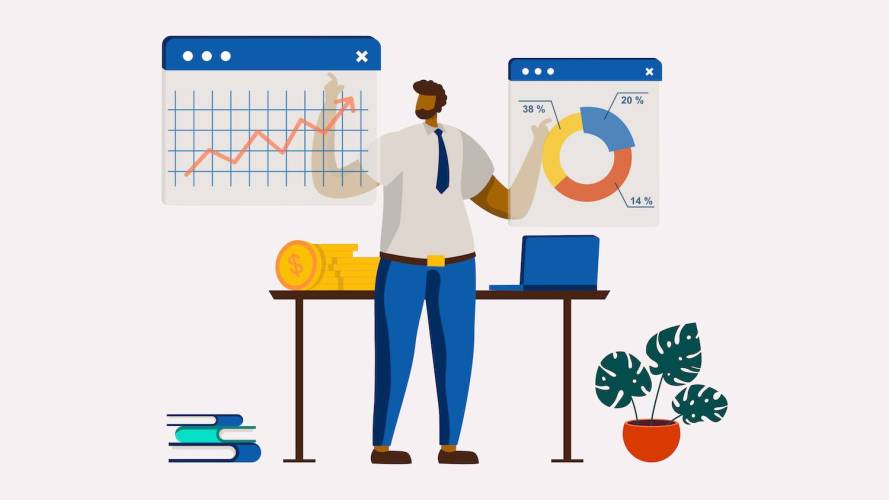B2B vs B2C Ecommerce: What’s the Difference?

Understand the major differences between B2B and B2C ecommerce, and learn successful strategies to enhance the buyer experience.
B2B ecommerce used to be a simple thing: businesses would just put up a website and wait for their customers to come. Now, those days have gone the way of VHS tapes and answering machines.
Today’s ecommerce world is a place of:
- 24/7 seamless engagement
- personalized communication
- omnichannel customer experiences
Businesses don’t sit back and wait for something to happen — they reach out and meet their customers in their favorite spots. This is the anytime, anywhere world of B2C e-commerce.
When it comes to B2B e-commerce, many still think of a dusty, outdated website, checking its watch and wondering where everyone is. This is changing, though, as today’s B2B buyer is just as digitally savvy as their B2C counterpart — and they expect the same exceptional service. When it comes to B2B vs B2C e-commerce, the gap is narrowing.
Here’s a deep dive into B2B vs B2C e-commerce, and a few key ways that B2B organizations can offer elevated e-commerce experiences.
What’s the difference between B2B ecommerce and B2C ecommerce?
B2B stands for ‘business to business’ while B2C is ‘business to consumer’. B2B ecommerce utilizes online platforms to sell products or services to other businesses. B2C e-commerce targets personal consumers. A company that sells office furniture, software, or paper to other businesses would be an example of a B2B company.
B2B ecommerce tends to be more complex than B2C ecommerce. It involves heavier research, more needs-based purchasing, and less marketing-driven buying. Many B2B buyers have very tight parameters around the purchases they can make. This means that traditional revenue drivers like add-ons don’t have the same impact. In the past, B2B organizations didn’t have much of an incentive to optimize their customer journey. But now, things are changing.
Free Resources for B2B Commerce
Why is B2B ecommerce more complex than B2C ecommerce?
Here are a few reasons why B2B e-commerce is more complex than B2C:
- B2B buyers have to consult with multiple departments before purchasing, while B2C consumers only have to consider themselves.
- B2B buyers look at the long term, which means they spend more time researching and sourcing recommendations. The B2C customer is more prone to impulse buying or emotionally driven purchases.
- B2B buyers deal in high-value purchases, so any misstep is magnified. Small-value B2C purchasing errors are much less impactful.
- B2B buyers are generally repeat purchasers, so organizations have to consider the long-buyer lifecycle. B2C consumers will often only buy a product once.
- Since B2B buyers are making purchasing decisions for entire companies, they have a tighter remit than B2C customers.
Tips to improve your B2B e-commerce platform and provide a B2C-level experience
While B2B e-commerce may be more complex — and the needs of the buyer different – that doesn’t mean those buyers don’t expect the same level of service. In fact, 63% of business buyers say most customer experiences fall short of what they know is possible.
Personalization has been a boon for B2C, but it can be for B2B as well. Building personal relationships is crucial, especially during the buying cycle. B2B organizations need to make the most out of every opportunity to connect with their target audience, display a differentiator, and highlight their brand. Here are a few ways that businesses can boost their B2B e-commerce experience:
Create an omnichannel experience
Today’s savvy consumer expects a seamless experience across touchpoints — and the business buyer does as well. On average, business buyers engage with companies across 10 different channels, and they want the entire journey to feel cohesive. In fact, 79% of customers expect consistent interactions across departments. That’s where an omnichannel strategy comes in.
Creating an omnichannel experience is a win/win. It enables customers to engage on any channel and offers businesses a wealth of data to better understand their customers. It’s what makes it possible to keep track of inventory and orders across every touchpoint, update messaging, and build a cohesive experience no matter where your shoppers want to browse or purchase.
Offer 24/7 customer support
Since B2B deals with large orders and complex processes, it’s important to offer robust customer support at every stage of the journey. Consider implementing chatbots for 24-hour customer support. This is especially helpful with generative AI for commerce, which enhances the chatbot experience by responding to even the most complicated inquiries with natural language.
In addition to chatbots and conversational commerce tools, consider creating an FAQ section that answers common questions interested parties may ask about your products, services, or market. This can significantly boost your ecommerce SEO efforts.
Business buyers are likely to perform extensive research before approaching your B2B sales team, and FAQ sections can lend credibility and value to this part of their journey.
Review the checkout process
While offering 24/7 customer support is important, it’s also important to allow customers to help themselves. According to a McKinsey report, 76% of B2B buyers find it helpful to speak to someone when they’re researching a product or service, but only 15% want to speak to someone when reordering. Offering one-click reordering, or even recurring subscriptions, can improve customer satisfaction.
Provide informative content
Since B2B e-commerce purchases aren’t as emotionally driven as B2C e-commerce purchases, it’s important to provide detailed information about products and services. Businesses can implement FAQs, community forums, video demonstrations, live chat, and more.
Another difference in B2B vs B2C is that the B2B buyer will expect their salesperson to thoroughly understand their industry and be well-equipped to answer difficult questions. A whopping 84% of business buyers expect sales reps to act as trusted advisors, and 86% are more likely to buy if companies understand their goals.
What’s next for B2B ecommerce?
Today’s B2B buyers may have higher expectations, but that just means that B2B organizations have to evolve to meet them. This is an opportunity for B2B companies to become more agile, responsive, and connected. To meet the moment and stay ahead of the curve, B2B leaders need flexible, complete commerce solutions that address the needs of all aspects of the buyer journey. A trusted partner for B2B commerce makes all the difference. Read the latest Forrester Wave report to learn why Salesforce Commerce Cloud is named a leader in B2B commerce.
Get started with B2B commerce
Launch quickly and develop a cost-effective approach.





































